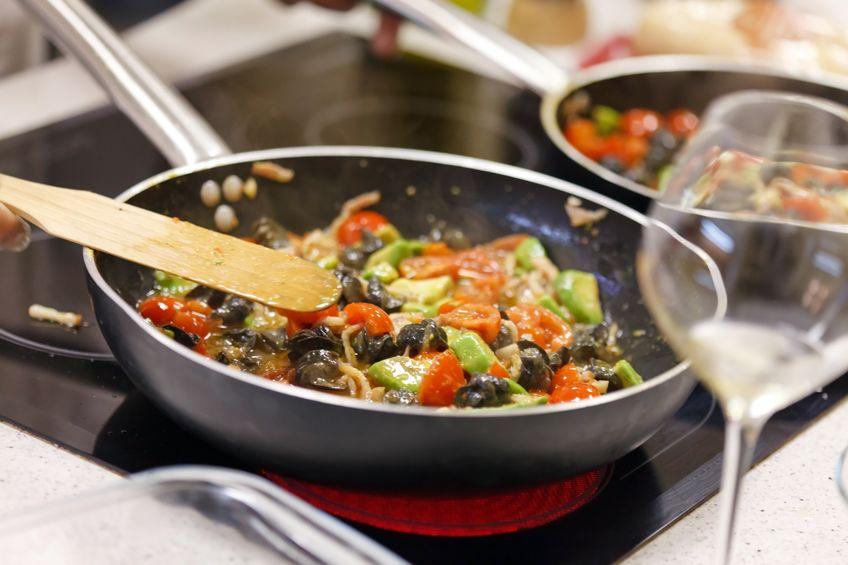
Non-stick pans have become a staple in many kitchens around the world, making cooking and cleaning up a breeze.
However, like all kitchen tools, non-stick pans also have a limited lifespan.
In this article, we will explore the factors that influence the lifespan of a non-stick pan and provide tips on how to extend its longevity.
Understanding Non-Stick Coatings

Before delving into the lifespan of a non-stick pan, it’s essential to understand the key component that makes it non-stick: the non-stick coating.
Most non-stick pans feature a layer of polytetrafluoroethylene (PTFE), commonly known by the brand name Teflon, or ceramic-based coatings.
These coatings are applied to the cooking surface of the pan to prevent food from sticking and make cooking easier.
How Long Do Non Stick Pans Last?

The lifespan of a non-stick pan exists as a multifaceted puzzle, shaped by the interplay of quality, culinary choices, and vigilant upkeep.
While a common estimate hovers around two to three years for the longevity of most non-stick pans, it’s imperative to recognize the intricate variations.
Lower-quality pans may offer fewer culinary escapades before their non-stick prowess fades, while their high-quality counterparts, when embraced with proper nurturing, can potentially endure well beyond the three-year horizon.
The key to extracting the utmost value from your non-stick pan lies in balancing these variables, forging a culinary journey that promises enduring and hassle-free cooking for many years to come.
Factors Affecting the Lifespan
 Several factors can influence how long a non-stick pan lasts:
Several factors can influence how long a non-stick pan lasts:
Quality of the Pan
The quality of the non-stick pan plays a significant role in its lifespan.
High-quality pans with a thicker and more durable non-stick coating tend to last longer than cheaper, low-quality alternatives.
Investing in a well-constructed pan from a reputable brand can extend its life significantly.
Cooking Habits
Your cooking habits can greatly impact the lifespan of a non-stick pan.
Using metal utensils, high heat, or abrasive scouring pads can damage the non-stick coating.
It’s essential to use wooden or silicone utensils and avoid cooking at excessively high temperatures.
Cleaning Methods
Proper cleaning is crucial for maintaining a non-stick pan’s longevity.
Avoid using harsh abrasives, steel wool, or dishwashers with abrasive detergents.
Instead, gently hand wash the pan with a soft sponge or cloth and mild dish soap.
Frequency of Use
The more frequently you use a non-stick pan, the faster it will wear out.
If you use your non-stick pan daily, it will likely have a shorter lifespan compared to one used only occasionally.
Cooking Oil and Sprays
While non-stick pans are designed to require minimal oil or cooking spray, using these sparingly can help preserve the non-stick coating.
Excessive use of oil or cooking sprays can create a residue that may be difficult to clean and may reduce the pan’s effectiveness.
Signs of a Worn-Out Non-Stick Pan

Recognizing when your non-stick pan has reached the end of its lifespan is essential to maintain the quality and safety of your cooking.
Here are some signs that indicate it’s time to replace your non-stick pan:
Scratches and Chips
Visible scratches or chips in the non-stick coating are a clear indication that the pan’s non-stick properties are compromised.
These imperfections can also lead to the release of potentially harmful chemicals into your food.
Uneven Cooking
If your non-stick pan no longer heats evenly or consistently, it may be time to replace it.
Uneven heating can result in food sticking to the pan or unevenly cooked dishes.
Loss of Non-Stick Properties
When food starts sticking to the pan despite proper cooking techniques and seasoning, the non-stick coating has likely deteriorated.
This is a sign that the pan is no longer effective and should be replaced.
Extending the Life of Your Non-Stick Pan

To maximize the lifespan of your non-stick pan, follow these tips:
- Use the right utensils: Always use wooden or silicone utensils to avoid damaging the non-stick coating.
- Cook at medium to low heat: High heat can degrade the non-stick coating, so cook at lower temperatures when possible.
- Avoid cooking sprays: Limit the use of cooking sprays, as they can build up on the pan’s surface.
- Hand wash with care: Gently hand wash your non-stick pan using a soft sponge and mild detergent.
- Store properly: Avoid stacking heavy objects on top of your non-stick pan to prevent warping.
An Example of Long-Lasting Non Stick Pan Set

Crafted with meticulous attention to detail, the All-Clad Nonstick set is all about delivering high-quality performance while ensuring everyday cooking convenience.
The heavy-gauge aluminum and stainless-steel base guarantee even heat distribution, resulting in consistently delicious dishes.
The premium nonstick coating is not only a master of easy food release but also a testament to its long-lasting endurance, ensuring you’ll enjoy its benefits for years to come.
Furthermore, your investment in this set is fortified by a limited lifetime warranty, showcasing All-Clad’s unwavering confidence in the quality and durability of their product.
With its exceptional performance, elegant design, and user-friendly features, it’s a set that will stand the test of time in your kitchen.
Bottom Line – What is the Life Span of a Non-Stick Pan?

In summary, the durability of a non-stick pan hinges on a combination of factors, ranging from the pan’s craftsmanship and your culinary practices to the level of care it receives.
By diligently maintaining your non-stick pan and staying vigilant for any indicators of wear and tear, you can savor the convenience and utility of your trusty kitchen companion for an extended period, ensuring countless enjoyable cooking experiences in the years ahead.


